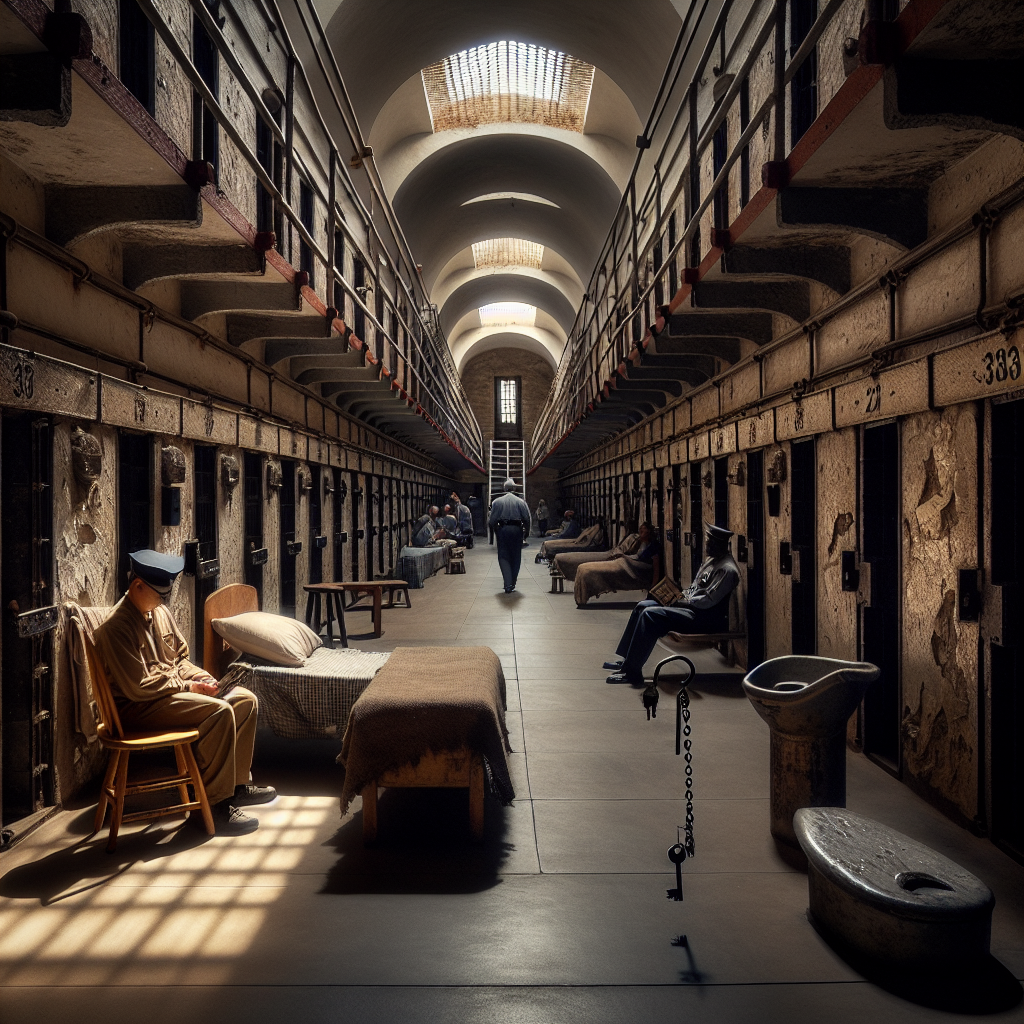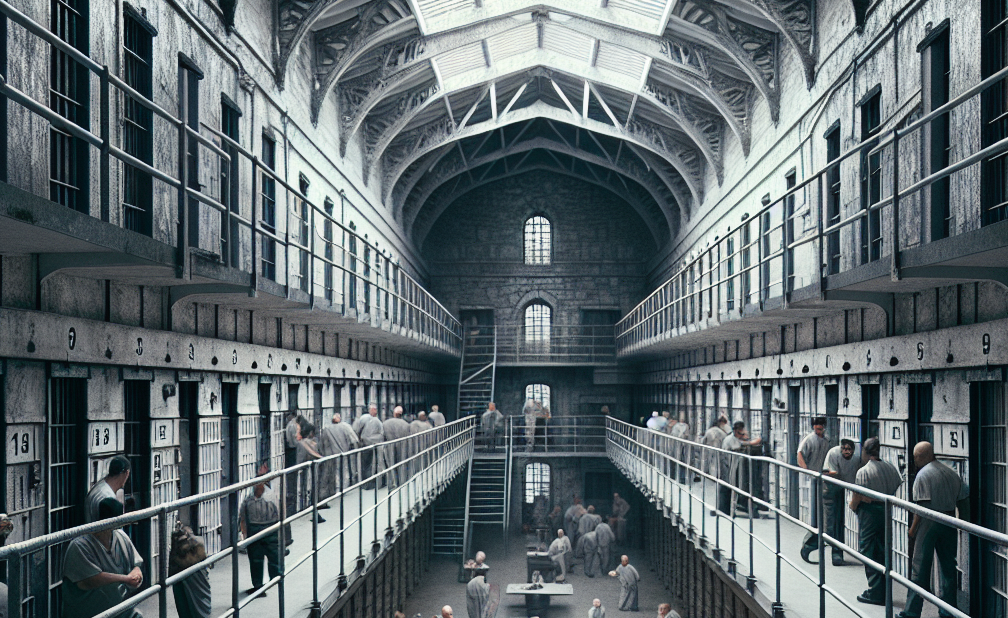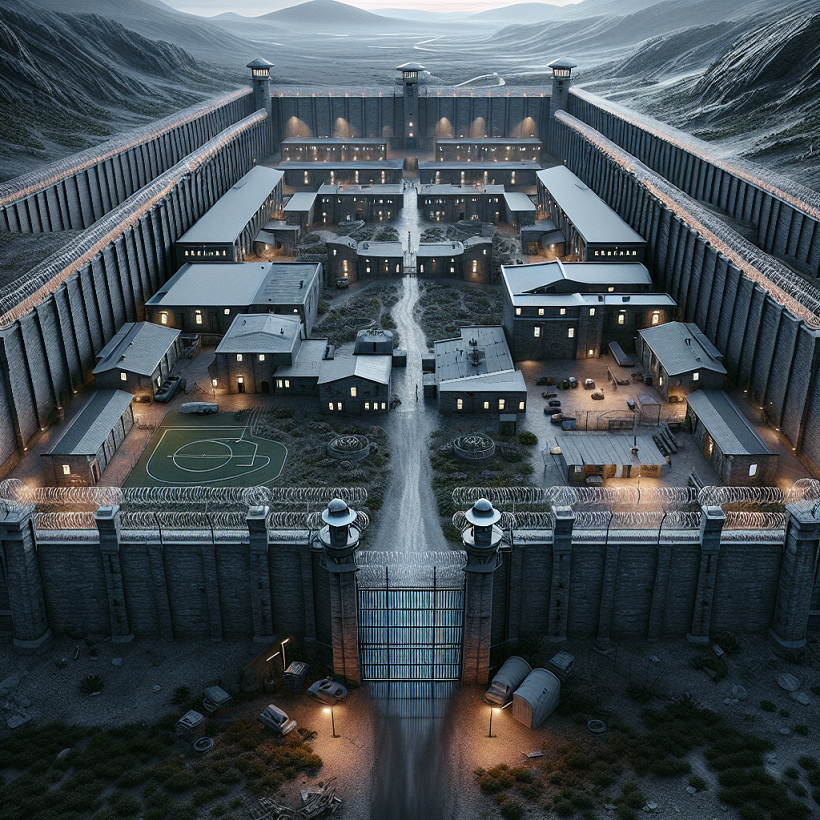Stillwater Prison, located in Minnesota, is a subject of interest for many.
This article aims to provide an in-depth look at this correctional facility.
We delve into the prison’s history, its architectural layout, and the daily life of its inmates.

We also explore the security measures in place, the demographics of the inmate population, and the various programs offered.
From healthcare services to visitation policies, this article provides a comprehensive view of Stillwater Prison.
Whether you’re a research analyst, a criminal justice professional, or simply interested in the subject, this article serves as a detailed resource.
RELATED: How to Conduct a Minnesota Prison Inmate Search, Minnesota Prison Inmate Search, List of Jails and Prisons in Minnesota
The Historical Context of Stillwater Prison
Stillwater Prison, officially known as Minnesota Correctional Facility – Stillwater, has a rich history.
Established in 1853, it is one of the oldest prisons in Minnesota.

The prison has witnessed significant changes in penal reform over the years.
Its historical significance extends beyond Minnesota, contributing to the broader narrative of the American correctional system.
Architectural Blueprint and Location
Stillwater Prison is located in Bayport, a city in Washington County, Minnesota.
The prison’s architectural layout is designed to facilitate security and inmate management.

The facility’s structure reflects the evolution of prison design, balancing the need for security with the goal of rehabilitation.
A Day in the Life of an Inmate
Inmates at Stillwater Prison follow a structured daily routine. This routine is designed to maintain order and provide opportunities for rehabilitation.
The day typically begins with a morning count, followed by breakfast. Inmates then participate in work assignments, educational programs, or other structured activities.
- Morning: Wake-up and count, breakfast, work or educational programs
- Afternoon: Lunch, continued work or programs, recreational time
- Evening: Dinner, free time in cells, evening count, lights out
The specific schedule can vary based on the inmate’s security level and program participation. Despite the challenges of prison life, these routines provide a sense of structure and purpose.
Security Measures and Protocols
Stillwater Prison employs stringent security measures to ensure the safety of both inmates and staff. These measures include regular inmate counts, surveillance systems, and controlled movement protocols.
In addition, the prison utilizes advanced contraband detection technologies. This includes body scanners and random cell searches to prevent the introduction of illegal items. These protocols are crucial in maintaining order and discipline within the prison.
Inmate Demographics and Statistics
Stillwater Prison houses a diverse inmate population. The demographics reflect a broad range of ages, ethnicities, and educational backgrounds. This diversity presents unique challenges and opportunities for the prison administration.
The prison also maintains detailed statistics on the inmate population. These include data on sentence length, offense type, and recidivism rates. Such information is vital for understanding the prison’s role within the broader correctional system.
Rehabilitation and Education Programs
Stillwater Prison places a strong emphasis on rehabilitation. The prison offers a variety of programs aimed at preparing inmates for life after release. These include vocational training, substance abuse treatment, and anger management courses.
Education is another key component of the prison’s rehabilitation efforts. Inmates have the opportunity to earn their GED or participate in college-level courses. These programs are designed to equip inmates with the skills and knowledge needed to secure employment upon release.
The effectiveness of these programs is measured by tracking recidivism rates. Lower rates indicate that the programs are successful in helping inmates reintegrate into society.
Healthcare and Mental Health Services
Healthcare at Stillwater Prison is comprehensive, covering both physical and mental health needs. The prison has a medical facility on-site, staffed by trained healthcare professionals. They provide routine check-ups, emergency care, and manage chronic conditions.
Mental health services are also a priority. The prison offers counseling, therapy, and psychiatric services. These resources aim to address the mental health challenges that many inmates face, including depression, anxiety, and the effects of long-term incarceration.
Visitation Policies and Family Impact
Visitation at Stillwater Prison is regulated by strict policies. Visitors must be pre-approved and adhere to specific rules during their visit. The prison offers both in-person and virtual visitation options, recognizing the importance of maintaining family ties.
The impact of incarceration on families is significant. The prison provides resources to help families navigate the challenges of having a loved one incarcerated. This includes information on visitation, communication methods, and support services available.
Staff Roles and Inmate Rights
The staff at Stillwater Prison play a crucial role in maintaining order and safety. Their responsibilities range from security and supervision to providing educational and rehabilitation services. Staff training and professional development programs are in place to ensure they are equipped to perform their duties effectively.
Inmates at Stillwater Prison are protected by a set of legal rights. These include the right to humane treatment, access to healthcare, and the ability to file grievances. The prison administration is committed to upholding these rights and ensuring fair treatment for all inmates.
Technology and Inmate Communication
Technology plays a significant role in inmate communication at Stillwater Prison. Inmates have access to monitored email services, allowing them to maintain contact with their families and legal representatives. This has revolutionized the way inmates communicate and has been instrumental in maintaining family ties.
However, the use of technology also presents challenges in terms of security and contraband prevention. The prison administration has implemented stringent measures to prevent misuse and ensure the safety of all parties involved.
Challenges and Administrative Hurdles
Stillwater Prison, like any correctional facility, faces a myriad of challenges. These range from managing an increasingly diverse inmate population to dealing with the complexities of prison reform. The administration is constantly striving to balance security needs with the rights and rehabilitation of inmates.
Budget constraints and overcrowding also pose significant hurdles. These issues impact the quality of services provided, from healthcare to educational programs. Despite these challenges, Stillwater Prison remains committed to its mission of public safety and inmate rehabilitation.
Conclusion: Stillwater’s Place in Minnesota’s Correctional System
Stillwater Prison holds a significant place within Minnesota’s correctional system. Despite the challenges it faces, the institution continues to evolve, striving to improve its facilities and services. Its commitment to inmate rehabilitation and public safety underscores its crucial role in the state’s efforts towards a more effective and humane penal system.